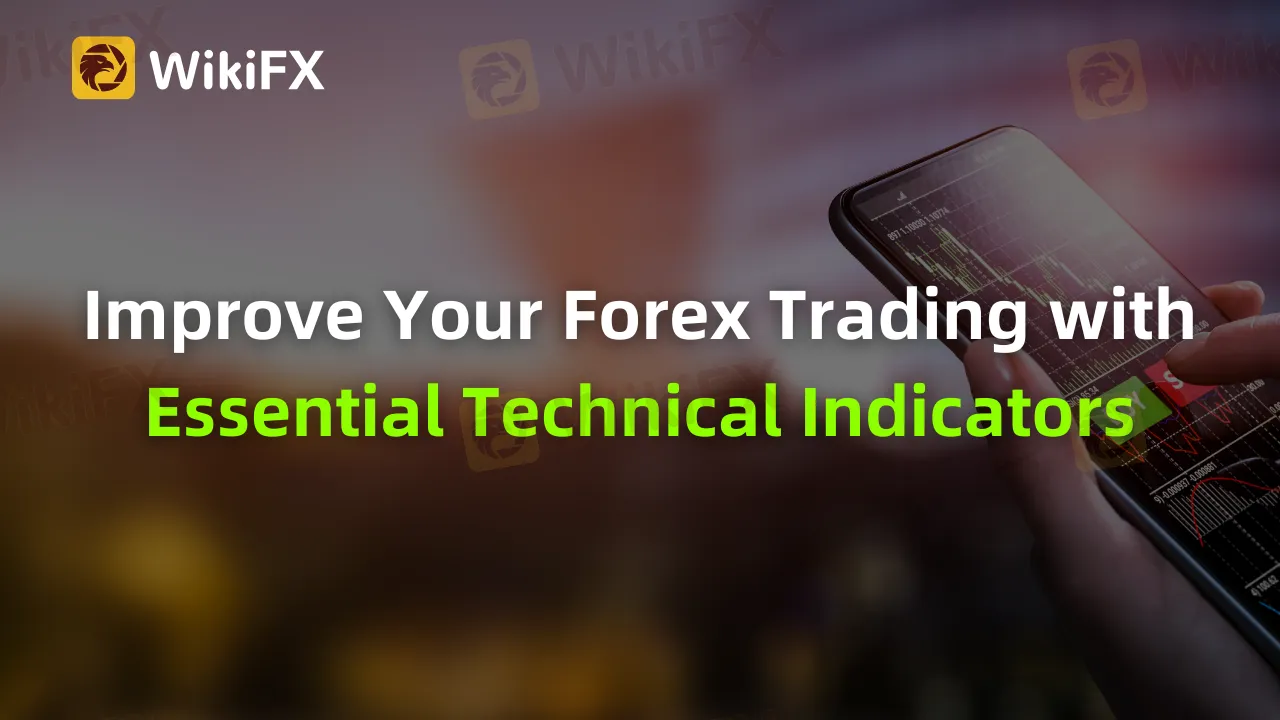简体中文
繁體中文
English
Pусский
日本語
ภาษาไทย
Tiếng Việt
Bahasa Indonesia
Español
हिन्दी
Filippiiniläinen
Français
Deutsch
Português
Türkçe
한국어
العربية
Improve Your Forex Trading with Essential Technical Indicators
Abstract:Forex indicators are essential tools for decision-making and risk management in forex trading. They offer insights into market trends, volume, momentum, and volatility. Successful trading relies on understanding, comparing, customizing, and effectively integrating these indicators into strategies, while considering the psychological aspects and market cycles.

The realm of forex trading is both intricate and fascinating, with technical indicators serving as its vital constituents. These indicators furnish traders with critical insights, making them essential tools for decision-making and risk management.
Understanding Forex Indicators
At the most basic level, forex indicators are data points that signify the potential direction of currency prices. These indicators are subdivided into four categories.
Trend Indicators: These include tools like Moving Averages and Average Directional Index, revealing the direction of a market trend.
Volume Indicators: Examples are the Money Flow Index and On Balance Volume, indicating the volume of a security's trading activity.
Momentum Indicators: The Relative Strength Index and Stochastic Oscillator are part of this category, measuring the speed of price movements.
Volatility Indicators: The Bollinger Bands and Average True Range belong to this category, providing information about market volatility.

Effective Forex Indicators
Some of the most effective forex indicators include the Moving Average Convergence Divergence (MACD), Relative Strength Index (RSI), Stochastic Oscillator, Bollinger Bands, and Fibonacci Retracement. These indicators, each with its unique functionalities, provide valuable signals about the market's direction, momentum, volatility, and potential reversal points.
Forex Indicators and Strategies
Integrating multiple indicators can create a comprehensive trading strategy. For instance, MACD can be used to identify the trend direction, and then the Stochastic Oscillator can confirm potential reversals. This systematic approach optimizes trading decisions and minimizes potential risks.
Automated Forex Trading and Indicators
The dawn of automated trading has seen forex indicators incorporated into trading algorithms or robots. They allow for high-speed data analysis, automated decision-making, and execution, often improving accuracy and efficiency.
Forex Indicator Customization and Creation
Advanced traders can create and customize forex indicators using platforms like MetaTrader 4 or 5. By tailoring these indicators, traders can suit their personal trading style and strategy.
Comparing Forex Indicators
Comparing forex indicators helps discern their strengths and weaknesses, thereby selecting the best fit for a trader's unique style. For example, while MACD is excellent for identifying trend direction, RSI might serve better in identifying overbought or oversold conditions.
Forex Indicators and Risk Management
Forex indicators are vital for risk management strategies, allowing traders to set stop-loss orders and limit potential losses. They can indicate when it might be prudent to exit a position, thereby protecting trading capital.
Psychology Behind Forex Indicators
Understanding the psychological aspects of trading is crucial, as biases and emotions can affect trading decisions. Forex indicators provide objective data, helping to alleviate the influence of psychological factors and promote more rational trading decisions.
Understanding Forex Market Cycles and Indicators
Forex indicators can help identify and understand market cycles. Recognizing these cycles enables traders to predict future price movements and make informed decisions.
Using Forex Indicators for Fundamental Analysis
While commonly used for technical analysis, some forex indicators can also provide insights into fundamental factors affecting currency prices, such as economic data releases and geopolitical events. These indicators offer a broader perspective of the market, making them valuable tools for a comprehensive trading strategy.
Conclusion
To conclude, mastering forex indicators is an essential step towards successful forex trading. With the right understanding and application, these tools can provide valuable insights, improve trading strategies, and effectively manage risk. Whether you're automating your trading, comparing various indicators, or exploring the psychology behind them, remember that they're an integral part of the larger forex trading landscape.
Download and install the WikiFX App on your smartphone to stay updated on the latest news.
Download the App here: https://social1.onelink.me/QgET/px2b7i8n

Disclaimer:
The views in this article only represent the author's personal views, and do not constitute investment advice on this platform. This platform does not guarantee the accuracy, completeness and timeliness of the information in the article, and will not be liable for any loss caused by the use of or reliance on the information in the article.
Related broker
Read more

MTrading Users Report Withheld Funds and High Withdrawal Fees
Traders from Kenya and Thailand have had bad experiences with MTrading as they faced withdrawal restrictions, higher deposit fees, and refusal to release funds. Is MTrading safe to trade forex?

Yen's Dramatic Rebound: What Should Investors Do Now?
The recent dramatic rebound of the yen has caught the attention of investors, prompting them to reassess their strategies. This article will analyze the reasons behind the yen's movement and provide recommendations for investors.

How Regulated Brokers' High-Tech Platforms Boost Profits
Discover why regulated brokers’ high-tech platforms boost profits with trust, cutting-edge tools, and risk management. Maximize returns in 2025’s dynamic markets!

US Authorities Crack Down on North Korea-Linked Cambodian $4B Scam
North Korea-linked Huione Group defrauds US citizens through romance scams and cyber theft, stealing billions. Federal authorities crack down on illegal operations.
WikiFX Broker
Latest News
MTrading Users Report Withheld Funds and High Withdrawal Fees
How popular is MT4/MT5 in Southeast Asia?
What is smartytrade?
SEC seeks to reopen case against Renwick Haddow to modify asset freeze
Currency Calculator


